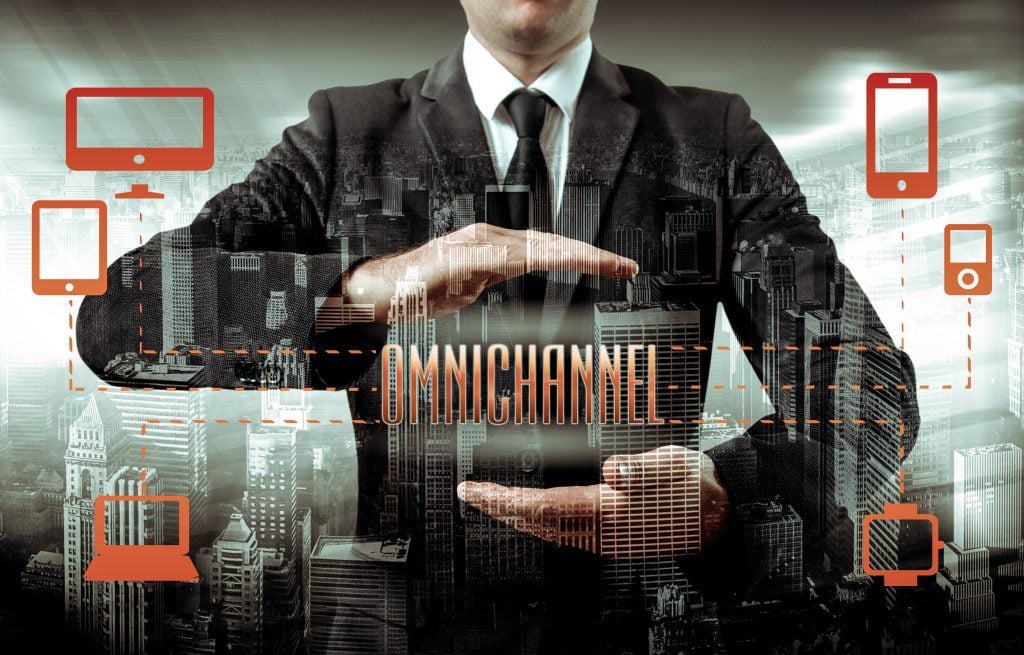
There are few industries in which customer expectations are shaping the future as they are in banking. Customers know they can expect personalized offerings, they want options for when/where/how they want to complete their transactions, and they know they have options. Banks are working harder than ever to keep up with this savvy audience. They know that changing banks is easy and that lifelong customer relationships are rare.
In this environment, success hinges on anticipating, meeting – and exceeding – customer demands in new ways across multiple platforms. That takes a persistent focus on creating, implementing, and constantly improving ways to make the banking experience efficient and fulfilling for their customers.
By 2015, many banks had moved to an omnichannel model that bridged digital and on-site banking services. Initially, this model was seen as a competitive advantage over multi-channel banking, which provided online and in-person bank solutions but did not necessarily connect those solutions to provide a consistent, personalized customer journey.
While omnichannel is new enough that some banks are still working to adopt the model fully, it’s already become the norm. That means it really only constitutes a competitive advantage if a bank has completely streamlined their online and onsite offerings to give customers optimal control over their banking activities and a level of personalized attention they can’t find elsewhere.
People and proximity matter less than personalization
Offering proof that a fully integrated online channel matters, 81% of consumers say they would not switch banks if their local branch closed – 43% would use another branch location or just bank online. Paralleling that trend, 38% of customers rank the quality of online banking services as the main reason to build a lasting relationship with their bank – ahead of branch proximity and low fees.[1]
Particularly as the range and quality of online options improve, a competitive omnichannel banking structure has to ensure that it offers a full set of options and control for the customer. There are four vital components of a smooth and fully integrated path between online and onsite:
- Online Appointment Booking: Integrate your appointment calendaring system with online and mobile scheduling systems so your customer can book or change an appointment ahead of time, giving them control and enabling the proper banking specialist to prepare for the consult.
-
Communication: Keep the customer informed and empowered during the transition from the online to offline.
Onsite - Check-in: As the customer arrives, they should have the option to check in with their phone or mobile device, at a convenient self-service kiosk, or with a dedicated host who has been informed of the upcoming appointment. In the near future, customers may even be greeted personally by ‘humanoid’ (robot) like Pepper.
- Face-to-Face Interactions: Being prepared is the key in order to provide a personalized service. With integrated video conferencing options, customers can engage in a face-to-face session with the most qualified bank advisor – regardless of whether that individual is on site or remote.
- Data: Build in ways to collect key metrics (i.e., journey engagement data, satisfaction and demand volume) to create actual, measurable intelligence about what customers want most, and when and where they want to engage with you.
For banks, sustaining relationships comes down to how well you have orchestrated your effort to simplify, personalize, and improve the customer experience. An integrated platform that connects every piece of the journey, centralizes customer data, and distributes the capabilities and insights to every online and on-site engagement points is the new competitive advantage in this environment where the actions of your customers will tell you all you need to know about the future of banking.
[1] 2015 North America Consumer Digital Banking Survey, Accenture
Image Courtesy; QMatic, Shutterstock




Hi Sven, I like your thoughts but wonder, while it is important for banks to become better at seamless availability, whether many banks shouldn’t rather improve in the transparency of their services? Example: The most qualified advisors are not of much help to me if the advice rendered by them is governed by the bank’s income. It is often the case that products offered in investment scenarios are the ones that offer highest margin to the bank (in terms of fees and/or sales commission by the issuer). Wouldn’t you agree that getting better in these core topics would be far more beneficial in terms of customer loyalty than ‘convenience features’ like the ones you described?
And I agree, that they are important, too, in a competitive world!
Just 2 ct from Down Under
Thomas
@twieberneit
One of the key reason for banks to still have branches and advisors is to sell more of the bank’s products. When banks go digital and online they become transparent and then they have to compete with more than transactional services online to keep their margins. The branch then becomes an opportunity to service profitable customers. And yes, I agree banks should improve both transparency in service – and competence in the frontline staff. However, it’s still very valid to get the basic customer service right – make sure that when I visit my bank that they are as prepared as possible. I don’t want to waste my time, I don’t want to repeat myself – I want to meet with someone that know me and my need. Adding then a much better transparency in prices/services I would be really happy. I am 100% convinced that traditional banks will be forced to improve transparency when being challenged by new entrants.
Another great tool to enhance customer experience is website co-browsing. The technology allows bank employees to seamlessly browse the bank’s website with customers. It eliminates the back and forth conversations like “what page are you on now? How about now?”
Hi Todd, can see the value of this – my grandfather would be suspicious though if someone “on the other side” would be able to monitor what he sees on the web – spooky 😉